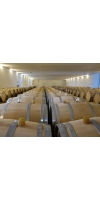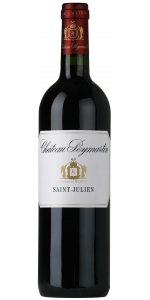Wine from Chateau Gloria

Château Gloria was founded and assembled by Henri Martin who established the reputation of the property within the space of a generation. With the first acquisition of 15 acres (6 hectares) of vines in 1942, and purchase of the chai of Château Saint-Pierre, Martin added to the estate over the years with land bought from surrounding classified estates, including Château Saint-Pierre, Beychevelle, Léoville Poyferré, Gruaud-Larose, Léoville-Barton, Ducru- Beaucaillou, and Lagrange. The estate now encompasses nearly 124 acres (50 hectares) Peymartin is Château Gloria’s second wine, produced using the youngest vines on the estate.
Location of Vineyard
The patchwork of vineyards that comprise Gloria are spread out over three distinct zones: the center of the commune Saint-Julien-Beychevelle, an area to the west, and an area to the north bordering the appellation of Pauillac. The average vine age is 40 years, and the soil is made up of Gunzian gravel covering a layer of clay and sand. The plantings are 65% Cabernet Sauvignon, 25% Merlot, 5% Cabernet Franc, and 5% Petit Verdot.
Winemaking Philosophy
After a manual harvest, the grapes are vinified in thermo regulated stainless steel vats with malolactic occurring in barrel. The wine spends approximately 12 months in cask, a third of which are replaced every year. The ensuing style of wine is typically a lighter and more elegant St. Julien, known for its early drinkability and charming character.
Chateau Peymartin Saint-Julien is made from 65% Cabernet Sauvignon, 25% Merlot, 5% Petit Verdot.
Peymartin is the second wine of Gloria, produced using the youngest vines (average 40 years-old) on the estate.
After a manual harvest, the grapes are vinified in thermo regulated stainless steel vats with malolactic in barrel. Peymartin spends approximately one year in cask followed by additional aging at the estate in bottel prior to release. The ensuing style of wine is typically a lighter and more elegant St. Julien, known for its early drinkability and charming character.
Tasting Notes:
Deep ruby-garnet in appearance, Peymartin is classic left-bank Bordeaux. Aromas of dried tobaco, cedar, blackcurrant, and pungent cooking spices greet the nose. The palate is extremely elegant with ripe, yet structured tannins balanced by firm acidity, black fruits, savory earth, and hints of toasted vanilla. A balanced and persistent finish underlines the wine's quality as well as its ability to hold up in bottle.
- back
Selected Options
Wineries
Categories
Pricing
Countries
Regions
Grape Types
Wineries
Organic/Free Shipping
Dunn Vineyards Napa Valley Cabernet Sauvignon is made from 100 percent Cabernet.
This Napa Valley wine is a blend of their Howell Mountain fruit and a small quantity of valley floor fruit that they purchase. This valley floor fruit contributes to the wine’s earlier approachability and softer tannic structure.
Review:
I loved the 2019 Cabernet Sauvignon Napa Valley, which I think is a step up over the 2018, although both 2019s show a much more elegant profile. Ripe currants, plums, roasted herbs, violets, and incense notes all shine in this medium to full-bodied, ripe, supple, layered beauty, which has fine tannins and a gorgeous finish. Enjoy bottles any time over the coming 15 years.
-Jeb Dunnuck 94 Points
Ferme Blanche Cassis Blanc Excellence is made from 40% Marsanne, 20% Ugni Blanc, 20% Clairette, 10% Sauvignon Blanc and 10% Bourboulenc.
The wine has a pale golden color and offers subtle aromas of citrus fruits, peach and apricot, and floral notes of acacia and linden. Crisp and lively on the palate, good tension and length and a refreshing finish.
Pair with sea stews, shellfish, traditional fish and chips, octopus salad.





